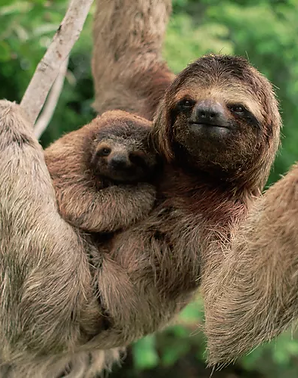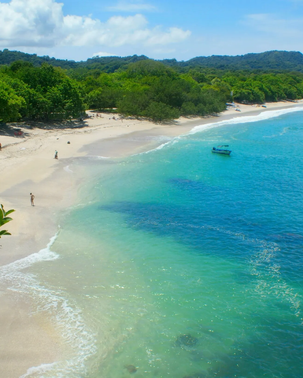
Costa Rica
"Pura Vida"
Costa Rica, also known as "The Rich Coast" is a Central American country bordered by Nicaragua and Panama. The country is known for its thick rainforests, breathtaking beaches, and many active volcanoes. There is a population of around 5.2 million people but is also home to many different types of animal and plant life.
Photos






Sloth's are one of the many animals that inhabit Costa Rica. However, they are the countries national animal, live in its vast rainforests.
The National Theater of Costa Rica is located in the center of San Jose. It is known for its intricate and enticing architecture.
Playa Conchal is located on the West Coast of Costa Rica and is part of the Guanacast province. One of the most popular activities in Costa Rica is surfing due to their access to many beautiful beaches.
History & Demographics
Costa Rica has had an inspiring and fascinating history, from its Colonization in the sixteenth century to the Civil War in the twentieth century. In the beginning, the people who lived in Costa Rica were hunter-gatherers. Hunter-gathers were people who hunted or gathered their food from the vast wildlife around them. From then on, many smaller civilizations and indigenous tribes were formed. Although, neither the Incas nor the Mayans, which were significant civilizations occupied Costa Rica. The country had many Indigenous groups, though the main ones included the Gutatusos or Malekus, the Chorotegas, the Huetares, the Cabecares, the Bribri, the Terrabas, the Borucas, and the Guyamies. However, this all changed in 1502, when Christopher Columbus arrived on the coast of Costa Rica. At first, the relations between Columbus and the Indigenous tribes were friendly. However, the Spanish weren’t as interested in Costa Rica as the neighboring countries. This was because Costa Rica lacked a large labor force, which was a crucial part of the Spanish conquest. However, the country remained under Spanish control. During this time, the number of Indigenous people significantly decreased, as many people fled to avoid suppression. After 319 years under Spanish rule, Costa Rica finally gained independence on September 15, 1821. Once Mexico gained independence after the Mexican War, in 1821, many countries joined the Mexican Empire, including Costa Rica, leading to its liberation. However, the Mexican Empire was short-lived, and soon after they formed the United Provinces of Central America from 1823 to 1838. Since Costa Rica became independent and since then many other influential events have happened. In 1899, the country became a democracy, where the people could elect their leaders. The country also has a strong judicial system and is generally regarded as having one of the most stable democratic governments. From March 12th to April 24th, 1948, there was a minor civil war that has had lasting impacts on the country to this day. A feud between two political leaders caused the war and afterward, led to the decision to disband the military shortly after the war, in 1949. The demographics in Costa Rica are also impacted by its rich history. The majority of the population is white or mestizo as they make up 83.6% of the people. A mestizo is someone who is from mixed races typically when one parent is Spanish and one is Indigenous. This is because many Spanish people immigrated to Costa Rica after the colonization. 6.7% of the population are mulattoes, which is someone who is mixed and has one white parent and one black parent. 2.4% of the people are Indigenous because many Indigenous people left or were driven out of the country after the Spanish took control. 1.1% of people are of African descent because they were brought over by the Spanish for more labor force. The remaining population is 1.1% of other races, and 2.2% unspecified. In conclusion, the captivating history of Costa Rica has shaped the country into the way it is today.